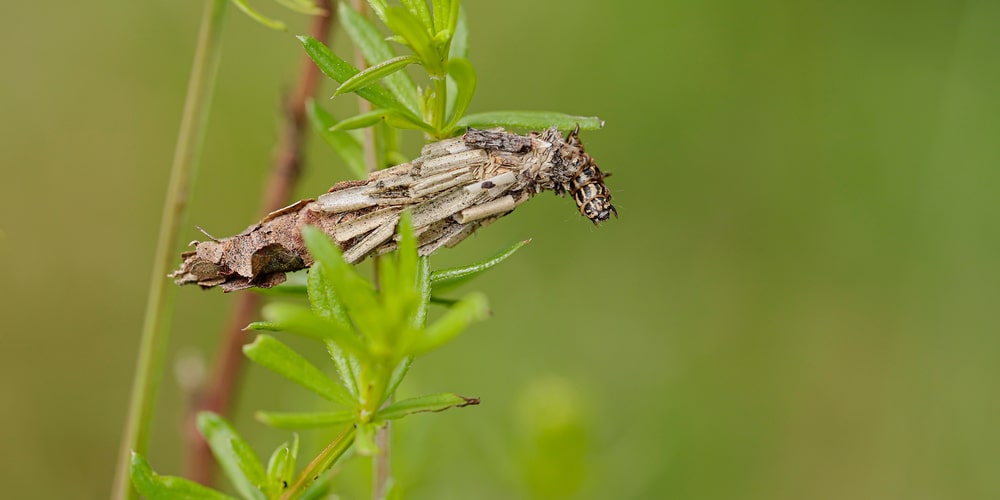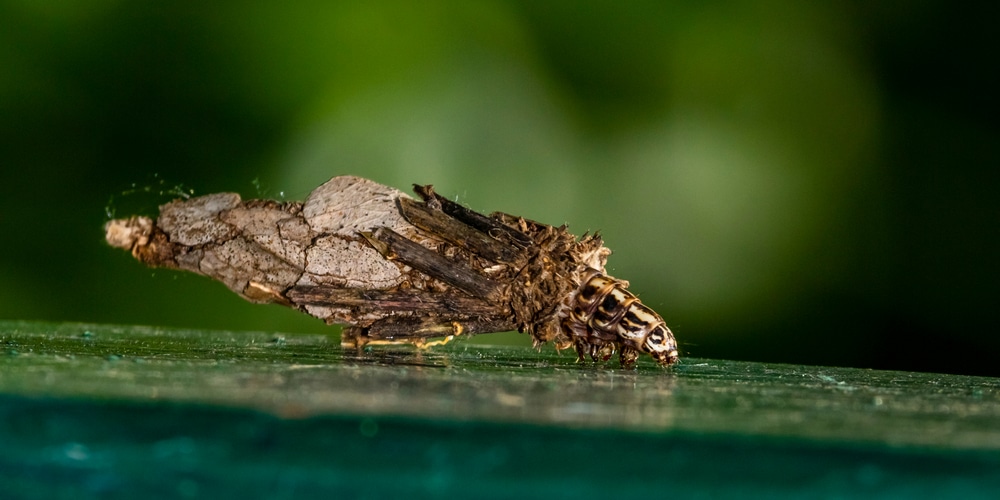Bagworms are one of the most common insect problems when it comes to shrubs and trees.
These irritating creatures can and will likely cause serious damage to the greenery in your yard if they are not dealt with quickly or efficiently enough. Bagworms begin feeding on greenery and lay their eggs in early to mid-autumn but the eggs themselves don’t hatch until early spring to mid-summer.
However, this long period of time in between the two processes does not mean that your plants are safe. This is because bagworms will still continue to feed in your yard while their eggs are developing.
Therefore, if you come across bagworms or something resembling them in your arborvitae, you must act immediately. Here is everything you need to know about bagworms on arborvitae and how to get rid of them.
What are bagworms:
Bagworms are a type of insect with lots of different species that are intent on damaging and feeding on most trees and greenery. Moreover, bagworms are actually the caterpillar stage that moths go through before they fully finish developing.
They are known to be native to the eastern part of the US and are most likely to be encountered in Nebraska and Kansas.
Male bagworms are dark, usually black in color, and have a fuzzy, hairy texture to them. They have wings that are clear and about an inch long.
Female bagworms are usually yellow in color and could possibly resemble maggots.
The main difference between male and female bagworms is that female bagworms do not have wings, legs, antennae, and mouthparts. The bagworms themselves are around one to two inches in size.
Bagworms get their name from the cocoons they make for themselves. These cocoons are created after the insects have had their fill of trees and other greenery and encase themselves in protective shields that resemble a bag. These bag-like shields are usually made of silk-like material that the bagworms spun themselves as well as leaves and twigs.
How can bagworms damage arborvitae:
Arborvitae is one of the most common plants that bagworms enjoy feeding on. After feeding on the plant bagworms will encase themselves in a cocoon, mate and lay their eggs.
Female bagworms can lay up to one thousand eggs at a time. Due to this high number, it is very likely and easy for the arborvitae to be overrun by bagworms if they are not dealt with immediately.
Bagworms feed on this plant’s leaves, starting from the top and working their way down, leaving nothing but brown remnants and destruction in their path. Bagworms not only damage arborvitae’s leaves but can sometimes even kill the plant itself.
Oftentimes it may be difficult to spot bagworms. This is because they make their cocoons out of the needles of the arborvitae plant. This cocoon acts as a type of camouflage for them while they work on destroying your plant.
Therefore, it may sometimes seem as though your arborvitae plant has become bare overnight when the insects have, in fact, been there for a little while.
How to get rid of bagworms on arborvitae:
If you are lucky enough to discover the bagworms pretty early on then removing them is pretty simple. Just chop or hose off the bag from where it is located on the shrub and remove it from your yard.
It is important that you take the bag far away enough from your yard so that the insects don’t find their way back. If you want foolproof insurance that they won’t bother you again, you can kill them. You can do this by setting the bag-like cocoons on fire.
If you are looking for a biological solution you can use Bacillus thuringiensis (Bt). Bt is a specific variation of bacteria that kills certain insects but poses no harm to beings such as animals and people. Bacillus thuringiensis needs to be sprayed on freshly hatched bagworm eggs which are usually produced in mid-July. For more specific directions on its usage, you should check the Bt’s packaging and/or instructions.
If you need a last resort and a chemical solution is an absolute must then you can use an insecticide. Just double-check that it is registered and read through the instructions carefully before using.
Bagworms on arborvitae: final thoughts
Overall, bagworms being on your arborvitae can cause the plant a lot of harm both in the short and in the long term.
Luckily, once spotted there are a few effective approaches you can take in order to eliminate them, you just need to be aware of what stage the bagworms’ life cycle is at.

